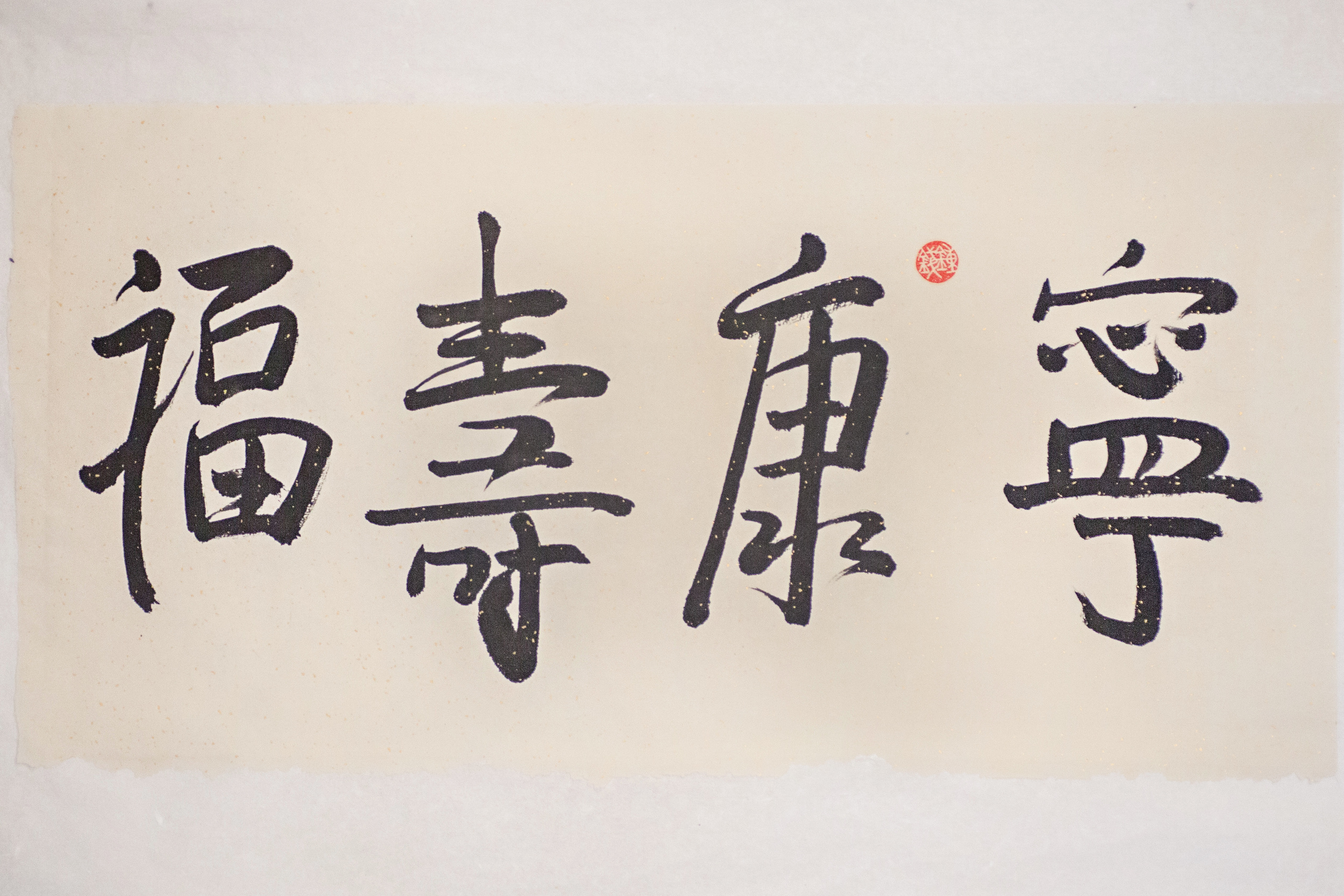Press "play" above for a more immersive and contemplative experience (alas, musical accompaniment not for iOS mobile devices - iPhone or iPad! Use your lap- or desktop instead).
"blessings for a long, healthy, peaceful life"
Chinese calligraphy is more than just a writing system. It is an art that, in its highest form, is considered to be a very expression of Tao. Tao, in Chinese philosophy, is the fundamental underpinning and unifying principle of the universe. It is usually translated into English as "The Way," and incorporates within it the ideas of yin and yang, and a code of behavior/mode of living that is in total harmony with the natural order. The interpretation of Tao in the Tao-te-Ching, for example, developed into the philosophical religion of Taoism.
Buddhists take the Tao to be "nothingness." Buddhist philosophy maintains that "reality" is an illusion. Thus, desire, want, striving for "things" yields only suffering because we yearn for what does not exist. We want to stay young, for example, but there is no eternal youth. We strive for material possessions, but we can't take them with us. We buckle beneath the weight of the loss of a loved one, but death and life are one.
In Buddhist philosophy, understanding this "nothingness" enables a person to live a life free of anguish caused by attachment. It is a rare individual indeed who achieves this Buddhist ideal, of course, but it is something to think about. For a more practical application of this idea in your own daily life, I like to come back to the admonishment by the German poet, Rainer Maria Rilke:
"Let everything happen to you
Beauty and terror
Just keep going
No feeling is final."
On the one hand, Chinese characters are the Asian counterpart to the Western alphabet, but there are a couple of points of difference. Characters represents not a sound, as Western letters do, but an idea - or part of an idea. Calligraphy is also more than a functional means of recording spoken language, and instead, contains all kinds of symbolic information that visually enhances the basic meaning of the word behind it. At its highest level, calligraphy is considered to be the art of expressing an inner understanding of Buddhist "nothingness" - a master calligrapher is actually participating in Tao. The strength, shape, and flow of the strokes are thought to reflect on some level the philosophical views and moral character of the calligrapher him- or herself, although this relationship should not be overstated or -simplified.
When executed well and in good proportion, characters are considered to be "alive" and "healthy," an expression of Tao - possessing bone, flesh, muscle, and blood to one degree or another. The inner strength of the character is the "bone"; to have "flesh" is to be neither too fat nor too lean; the "blood" is the amount of water mixed in with the ink, and should show a strong bold color (not thin and weak). Whether the end product has "muscle" - the overall quality of the work - is in the eye of the beholder.
In this way, the calligrapher's work becomes an expression of life itself, and the act of creating it a practice in the art of "letting everything happen to you.... just keep going."

